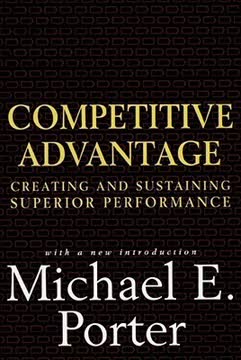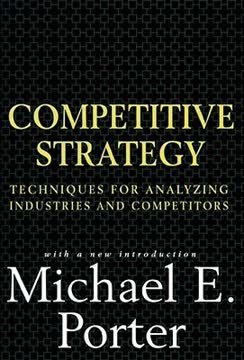Key Takeaways
1. Competitive advantage stems from creating superior value for buyers
Competitive advantage grows fundamentally out of value a firm is able to create for its buyers that exceeds the firm's cost of creating it.
Value creation is key. Competitive advantage arises when a firm delivers value to buyers that surpasses the cost of producing it. This value can manifest in two primary ways:
- Lower costs: Enabling the firm to offer comparable benefits at a lower price
- Superior benefits: Providing unique advantages that justify a premium price
To sustain competitive advantage, firms must continually innovate and improve their value proposition. This involves:
- Understanding buyer needs and purchasing criteria
- Analyzing the firm's value chain to identify opportunities for cost reduction or differentiation
- Developing difficult-to-imitate capabilities and resources
- Aligning all activities to support the chosen competitive strategy
2. The value chain is a powerful tool for analyzing competitive advantage
The value chain disaggregates a firm into its strategically relevant activities in order to understand the behavior of costs and the existing and potential sources of differentiation.
Dissecting firm activities. The value chain provides a systematic way to examine all the activities a firm performs and how they interact. It breaks down the firm into distinct value-creating activities, allowing managers to:
- Identify sources of cost advantage or differentiation
- Analyze linkages between activities that can create competitive advantage
- Understand how the firm's activities relate to the buyer's value chain
Key components of the value chain include:
- Primary activities: Inbound logistics, operations, outbound logistics, marketing and sales, service
- Support activities: Firm infrastructure, human resource management, technology development, procurement
By optimizing and coordinating these activities, firms can enhance their overall competitive position.
3. Cost leadership and differentiation are the two primary routes to competitive advantage
A firm can gain a cost advantage or how it can differentiate itself.
Two paths to superiority. Firms can pursue competitive advantage through either cost leadership or differentiation:
Cost Leadership:
- Achieve the lowest cost position in the industry
- Requires aggressive cost-cutting, efficiency improvements, and scale economies
- Allows firm to offer lower prices or enjoy higher margins
Differentiation:
- Create unique and valuable offerings for buyers
- Can be based on product features, brand image, customer service, or other factors
- Enables firm to command premium prices or gain customer loyalty
Firms must choose which strategy to pursue, as attempting both simultaneously often leads to being "stuck in the middle" with no clear competitive advantage. However, in some cases, firms can achieve both cost leadership and differentiation through:
- Superior technology or innovation
- Economies of scale in activities that also enhance differentiation
- Strong interrelationships between business units
4. Technology plays a crucial role in shaping competitive advantage and industry structure
Technology affects competitive advantage if it has a significant role in determining relative cost position or differentiation.
Technological impact is pervasive. Technology influences competitive advantage and industry structure in multiple ways:
- Cost reduction: New technologies can lower production costs or improve efficiency
- Differentiation: Innovative features or processes can create unique value for buyers
- Industry transformation: Disruptive technologies can reshape entire industries
Firms must carefully manage their technology strategy by:
- Identifying key technologies that drive competitive advantage
- Deciding whether to be a technology leader or follower
- Integrating technology decisions with overall competitive strategy
- Monitoring emerging technologies that could impact the industry
The impact of technology extends beyond just products and production processes. Information systems, for example, can revolutionize various activities in the value chain, from logistics to customer service.
5. Competitor selection and industry segmentation are vital strategic considerations
The first fundamental determinant of a firm's profitability is industry attractiveness. Competitive strategy must grow out of a sophisticated understanding of the rules of competition that determine an industry's attractiveness.
Strategic positioning is crucial. Firms must carefully analyze their industry structure and choose where to compete:
Industry Segmentation:
- Identify distinct segments based on differences in buyer needs or cost behavior
- Evaluate the attractiveness of each segment
- Decide which segments to serve and how to position within them
Competitor Selection:
- Recognize that some competitors can be beneficial to industry structure
- Identify "good" competitors that help validate the market or absorb demand fluctuations
- Develop strategies to deal with different types of competitors
Key considerations in competitor and segment selection include:
- Structural attractiveness of segments
- Firm's capabilities and competitive advantages
- Interrelationships among segments
- Sustainability of focus strategies
By making informed choices about where and against whom to compete, firms can enhance their competitive position and influence industry structure to their advantage.
6. Substitution threats can significantly impact industry profitability and demand
All industries face the threat of substitution.
Substitutes limit potential. The threat of substitution is a key competitive force that can:
- Place a ceiling on industry prices
- Reduce industry demand and growth potential
- Alter the competitive dynamics within an industry
To analyze and respond to substitution threats, firms should:
- Identify potential substitutes by examining the functions their product performs
- Analyze the economics of substitution, including relative price/performance and switching costs
- Monitor changes in technology or buyer preferences that could accelerate substitution
- Develop strategies to defend against substitutes or promote substitution if on the offensive
Types of substitution to consider:
- Direct product substitutes
- New ways of performing the same function
- Reduced usage or elimination of the product/function
- Recycled or reconditioned products
- Backward integration by buyers
7. Corporate strategy must align with and reinforce competitive advantage
Corporate strategy must include choices about what important technologies to invest in, whether to seek technological leadership in them, and when and how to license technology.
Coherent strategy is essential. For diversified firms, corporate strategy must support and enhance the competitive strategies of individual business units:
Corporate-level considerations:
- Identifying and exploiting interrelationships among business units
- Managing the corporate portfolio to create overall value
- Allocating resources to support competitive advantage
Technology strategy at the corporate level:
- Identifying core technologies that impact multiple business units
- Coordinating R&D efforts across the corporation
- Deciding on technology leadership or followership in key areas
Effective corporate strategy involves:
- Ensuring that diversification moves create real economic value
- Developing organizational structures and systems that support competitive advantage
- Balancing centralization and decentralization to optimize both corporate and business unit performance
- Fostering a corporate culture that reinforces competitive strategy
By aligning corporate strategy with competitive strategy, firms can leverage their full resources and capabilities to create sustainable competitive advantage.
Last updated:
FAQ
What's Competitive Advantage: Creating and Sustaining Superior Performance about?
- Focus on Strategy: Michael E. Porter's book explores how firms can create and sustain a competitive advantage in their industries through strategic choices.
- Value Chain Concept: It introduces the value chain as a framework for analyzing a firm's activities, helping to identify sources of competitive advantage.
- Sustainability of Advantage: The book emphasizes the importance of maintaining competitive advantages that resist erosion from competitors.
Why should I read Competitive Advantage: Creating and Sustaining Superior Performance?
- Practical Frameworks: The book provides practical frameworks for analyzing competitive strategy, valuable for business practitioners.
- Comprehensive Analysis: It covers topics like cost leadership, differentiation, and the role of technology, equipping readers with tools to assess their firms.
- Timeless Relevance: Despite being published in 1985, its concepts remain relevant in today’s competitive landscape.
What are the key takeaways of Competitive Advantage: Creating and Sustaining Superior Performance?
- Value Chain Importance: Understanding the value chain is central to identifying areas for cost reduction and differentiation.
- Two Types of Advantage: Porter identifies cost leadership and differentiation as primary competitive strategies.
- Sustainability Focus: A competitive advantage must be sustainable, requiring barriers to imitation and continuous improvement.
What is the value chain, as defined in Competitive Advantage: Creating and Sustaining Superior Performance?
- Definition: The value chain disaggregates a firm into strategically relevant activities, analyzing costs and differentiation.
- Linkages Matter: It emphasizes the importance of linkages between activities, where one activity's performance can affect another.
- Buyer’s Perspective: Understanding the buyer's value chain helps firms create value that justifies a premium price.
How does Michael E. Porter define competitive advantage in Competitive Advantage: Creating and Sustaining Superior Performance?
- Unique Value Creation: Competitive advantage is the ability to create more economic value than rivals through differentiation or cost leadership.
- Sustainability: It must be difficult for competitors to replicate, often due to unique resources or capabilities.
- Long-term Focus: Achieving competitive advantage requires a long-term strategic vision and commitment.
What are the Five Forces, and how do they affect competition according to Competitive Advantage: Creating and Sustaining Superior Performance?
- Framework for Analysis: The Five Forces framework examines industry competition through new entrants, supplier power, buyer power, substitutes, and rivalry.
- Impact on Profitability: Each force influences industry profitability, with stronger forces typically leading to lower profitability.
- Strategic Implications: Understanding these forces helps firms develop strategies to mitigate threats and leverage opportunities.
What are the three generic competitive strategies outlined in Competitive Advantage: Creating and Sustaining Superior Performance?
- Cost Leadership: Focuses on becoming the lowest-cost producer, allowing for lower prices or higher margins.
- Differentiation: Involves offering unique products or services that provide added value to customers.
- Focus Strategy: Targets a specific market segment, either through cost or differentiation, to serve customers more effectively.
How can a firm achieve cost advantage according to Competitive Advantage: Creating and Sustaining Superior Performance?
- Control Cost Drivers: Firms can gain a cost advantage by controlling cost drivers like economies of scale and learning.
- Reconfigure the Value Chain: Achieving cost advantage may involve adopting new technologies or changing activity linkages.
- Sustainability: A cost advantage must be sustainable, focusing on barriers to imitation and process improvement.
How does differentiation work in Competitive Advantage: Creating and Sustaining Superior Performance?
- Creating Unique Value: Differentiation involves providing unique value that justifies a premium price, through activities like product design or customer service.
- Cost of Differentiation: Firms must ensure the price premium exceeds additional costs incurred.
- Buyer Value Chain Impact: Differentiation must align with the buyer's value chain to lower costs or enhance performance.
What are the risks associated with cost leadership strategies in Competitive Advantage: Creating and Sustaining Superior Performance?
- Imitation Risk: Cost leadership is vulnerable to imitation, requiring continuous innovation to maintain position.
- Market Dynamics: Changes in technology or buyer preferences can undermine a cost leader's position.
- Quality Compromise: A focus on cost reduction may lead to quality compromise, damaging reputation.
How can firms sustain their competitive advantage over time according to Competitive Advantage: Creating and Sustaining Superior Performance?
- Continuous Innovation: Sustaining advantage requires ongoing innovation and adaptation to market changes.
- Barriers to Imitation: Firms should create unique resources and capabilities that are difficult to replicate.
- Monitoring Changes: Regularly analyzing the competitive landscape and adjusting strategies is essential.
What are the best quotes from Competitive Advantage: Creating and Sustaining Superior Performance and what do they mean?
- Strategy Configuration: "A strategy is an internally consistent configuration of activities that distinguishes a firm from its rivals." This emphasizes aligning activities to support a unique market position.
- Value Creation: "Competitive advantage grows fundamentally out of the value a firm is able to create for its buyers." This highlights delivering value as the essence of competitive advantage.
- Robust Positions: "The most robust competitive positions often cumulate from many activities." This suggests sustainable advantage results from managing multiple activities effectively.
Review Summary
Competitive Advantage receives mostly positive reviews, praised for its groundbreaking concepts on business strategy and competitive positioning. Readers appreciate Porter's insights on differentiation, cost leadership, and value chain analysis. Critics note the book's density and datedness, with some finding it dry and theoretical. Many consider it essential reading for business professionals and students, though some argue its relevance has diminished. Overall, reviewers acknowledge Porter's significant contribution to strategic management, despite the challenging read.
Similar Books
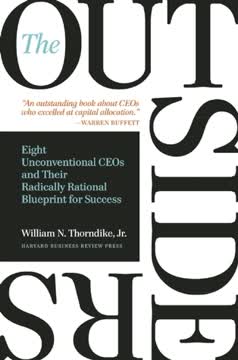



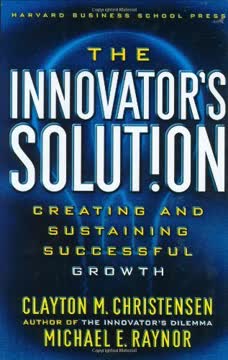



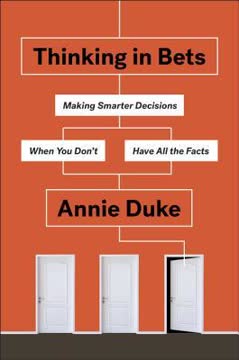

Download PDF
Download EPUB
.epub digital book format is ideal for reading ebooks on phones, tablets, and e-readers.
